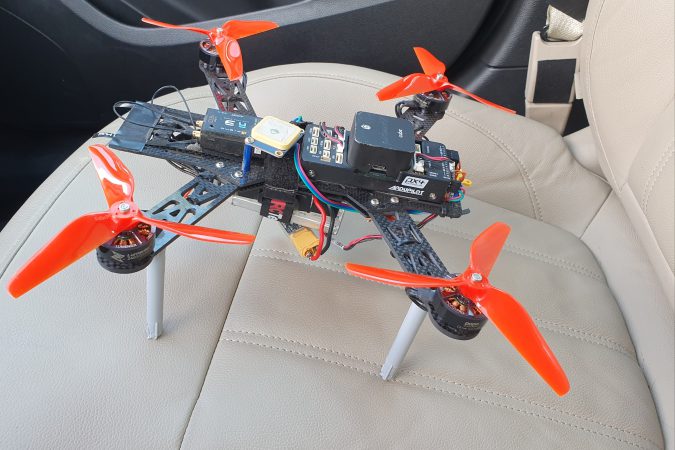Medium, rare

This Sunday I took my mid-size drone to an open air test flight. I’m about to summarize the findings for those who feel like building their own gear with a strong custom flavor.
So, earlier this week we had the pleasure of a large set of display flights, downtown Budapest. Several types of copters and fixed wing aircraft were part of the show, crawling above the rather densely populated area and river Danube.

Now, there’s just one pathway more exciting than flying man-made aircraft: being the man who makes aircraft. And that ain’t easy, even if you do it heavily down-scaled, both in terms size and functionality.
Even if you buy larger units or complete body-kits, there might be situations when you decide to make modifications to the intended architecture. I remember, when I bought this FPV 250 frame for my medium size build, it came with several tiny carbon elements I had not even considered making part of this piece. This way, I made it kind of rare. One reason for that being that I hardly intended to do any video recordings at that time, while the other was about trying to avoid parts that block me from adding some more interesting computer parts.
Nowadays, the above mentioned computational parts were moved to a larger frame (X6) but I still tend to hack the small one for sun fun, taking it out to an often totally abandoned model airport today, North of BUD.

That place is neighbored by a farm with a huge flock of sheep, probably one thing that I would gladly record on an aerial video – maybe later this year.
There was one thing ultimately solved today: as mentioned above, this frame lacks some parts, providing a totally flat surface for the otherwise reduced gear. For that same reason, the character of the aircraft drifts away from usual, too. This means that tuning the drone with an otherwise common set of PID parameters will not make it work good enough. One annoying phenomenon might be a badly shaking frame from the moment of take off.
What is kind of new as an experience is that even if I solved that trembling effect by tuning the roll & pitch P values via one RC channel, there had been some ugly attitude remaining.
What ultimately solved that, was the adjustment of a particular range at the same page of settings in Mission Planner: the range along which the knob of the remote controller (such I assigned for in-flight tuning) sets the already mentioned P value. Although this should not normally mean an issue, what I recognized was that these values mixed out from the controller to the receiver often oscillate a tiny bit, due to the analogue nature of the adjustable resistor realizing this feature. In case that range is rather wide, the oscillations are also amplified, becoming proportionally larger, making the PID value set non-deterministic regarding their P part.
Having set this range to include rather tight limits (0.01 to 0.2), the medium sized drone flew its most perfect round so far – also being its first time in open-air, not in a room / hall.